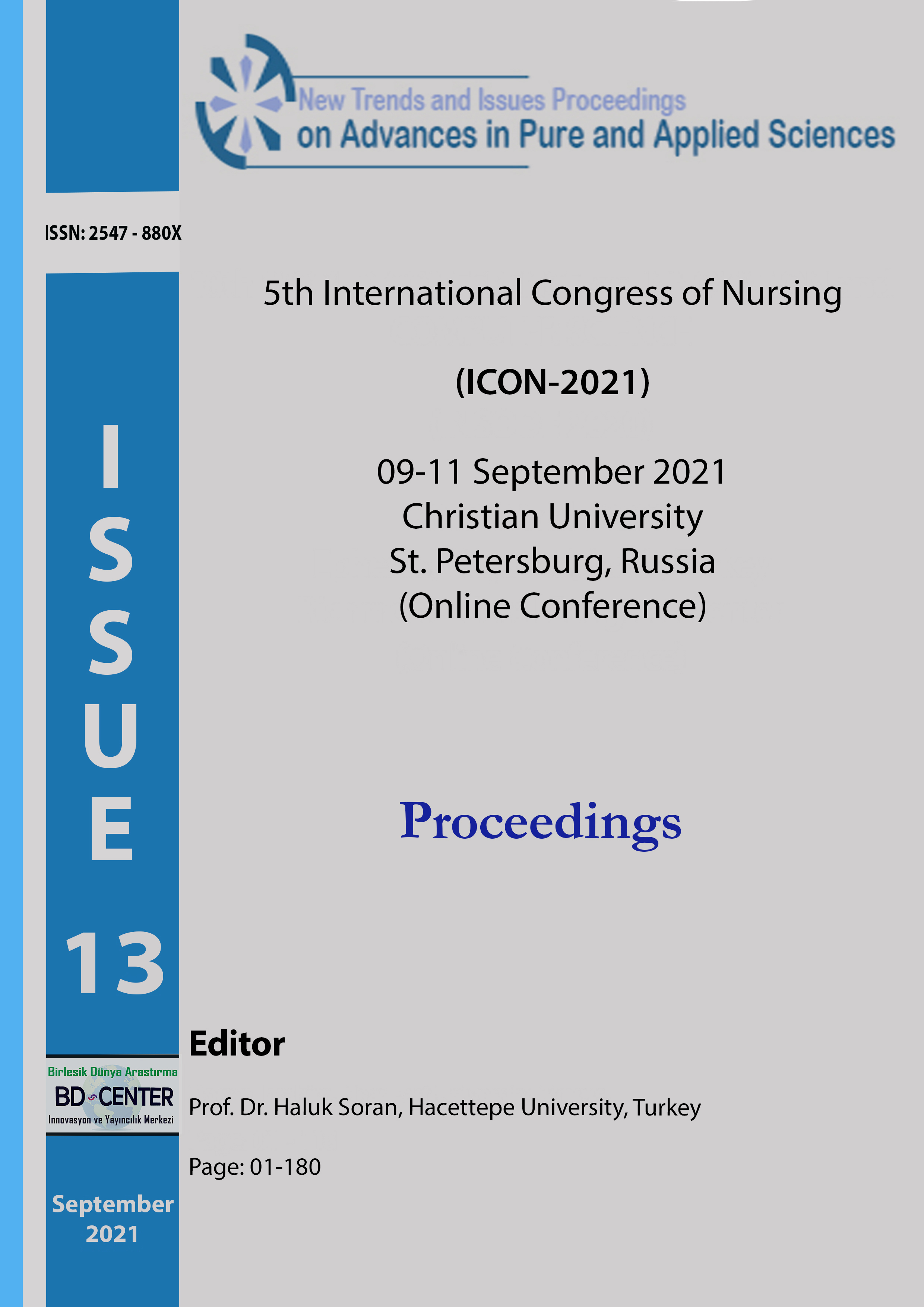The effects of nursing students’ approaches to team work on their attitudes towards patient safety
Main Article Content
Abstract
This study was conducted to find out the effects of nursing students’ approaches to team work on their attitudes towards patient safety. The present study has a descriptive, correlational and cross-sectional design. The study was conducted with students studying in the nursing department at Health Sciences Faculty of a university between 22.04.2021 and 05.05.2021. A total of 212 students who volunteered to participate in the study were included in the study as a result of this. The data were collected by using ‘Student Descriptive Information Form’, ‘Attitude Scale for Teamwork (ASTW)’ and ‘Questionnaire Form to Determine Nursing Students’ Attitudes towards Patient Safety (QDAPS)’ prepared by the researchers. Percentage calculation, Kruskal–Wallis test, Mann–Whitney U test, Spearman’s correlational test and Cronbach’s alpha coefficient were used to evaluate the data. It was found that 75% of the nursing students in the study were female, 25% were male, the settlement where 41% lived the most was province, 56.1% had received training about patient safety and 31.6% of those who had received training thought their training was sufficient. Of the students who had received clinical training, 17.5% faced medical errors during training, 33.6% of these students reported the cause of error as lack of communication, 15.9% thought medical errors resulted from careless work and excessive workload, 49.5% thought medical errors resulted from nurses and 70.3% were prone to teamwork. In the study, ASTW total mean score was found as 119.97 ± 12.6. It was found that the ‘leadership’ subscale had the highest mean score (27.47 ± 3.37), while ‘mutual support’ subscale had the lowest mean score (17.48 ± 3.34). QDAPS total mean score of the students was found as 91.41 ± 5.09. When the relationship between ASTW and QDAPS was examined, a statistically significant, positive and weak association was found (Spearman’s r: 0.348; p < 0.01). No statistically significant difference was found between students’ ASTW total mean scores and sociodemographic features (p > 0.05). However, total QDAPS mean sores of nursing students who were more prone to teamwork, those who loved their profession, those who had health problems and those who had received clinical training were statistically significant and high (p < 0.05). In the study, team work and patient safety attitude total mean scores of nursing students were found to be high. In addition, it was found that as mean scores of team work increased and attitudes towards patient safety became more positive. Inclusion of patient safety and team work training in the curriculum in preventing medical errors may contribute to ensuring patient safety.
Keywords: Nursing, nursing students, patient, patient safety, teamwork
Downloads
Article Details

This work is licensed under a Creative Commons Attribution 4.0 International License.
Authors who publish with this journal agree to the following terms:- Authors retain copyright and grant the journal right of first publication with the work simultaneously licensed under a Creative Commons Attribution License that allows others to share the work with an acknowledgement of the work's authorship and initial publication in this journal.
- Authors are able to enter into separate, additional contractual arrangements for the non-exclusive distribution of the journal's published version of the work (e.g., post it to an institutional repository or publish it in a book), with an acknowledgement of its initial publication in this journal.
- Authors are permitted and encouraged to post their work online (e.g., in institutional repositories or on their website) prior to and during the submission process, as it can lead to productive exchanges, as well as earlier and greater citation of published work (See The Effect of Open Access).
